Exploring Modern Soccer Cleat Design with Altair Sulis
The 2022 FIFA World Cup recently kicked off in Qatar, where temperatures are high during these late months of the year. In soccer, one of the main components – if not the most important piece – of an athlete’s uniform are their cleats. Especially for high-stakes games, cleat designers and manufacturers must consider factors like durability, quality, and strength, alongside external factors like weather and of course, the sport’s physical nature.
Finding ways to optimize players’ footwear so it’s lightweight yet durable and effective helps players stay quick on their feet and deliver game-winning results. When manufacture of these shoes first began years ago, they were designed for protection. That focus has shifted to considerations like comfort, “feel,” breathability, aesthetics, and ways the cleat adapts to different players’ play styles and movements.
We’re big soccer fans at Altair, so we wanted to try our hand at developing our own soccer cleat that could compete with the modern designs we’ll see in this year’s World Cup and beyond. Naturally, we turned to our suite of simulation tools to get to work.
Setting Up the Model in Altair Inspire
The initial design conceptualization and rendering was performed using Altair Inspire, which is great for quickly creating and studying innovative geometries. First, we imagined a basic model with Altair colors, and then we began building the real concept. To start, we created a baseline generic shoe cleat in Altair Inspire Studio .
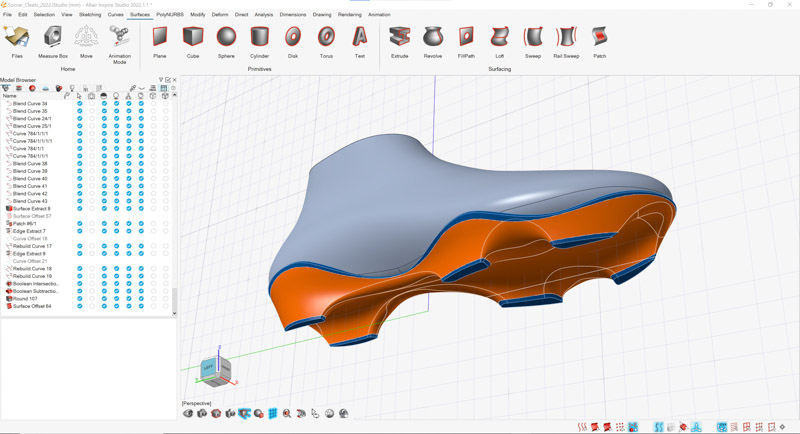
Baseline design in Inspire Studio.
Using Sulis for Lattice Creation
Altair Sulis was the key to bringing the design to the next level. The aim in using Sulis was to explore what a cleat would look like if it was designed using lattice and additive manufacturing technology. Although lattice design in footwear has been done before, it’s still a newer design method.
We imported the sole into Sulis, which we then utilized to create a lattice design for the base of the shoe, which made the shoe more breathable, flexible, and optimized for traction. Sulis is a 3D printing generative design software for creating advanced geometries, as well as one-click lattice creation. Multiple lattice structures are available in Sulis, and we generated ideas based on what was available.
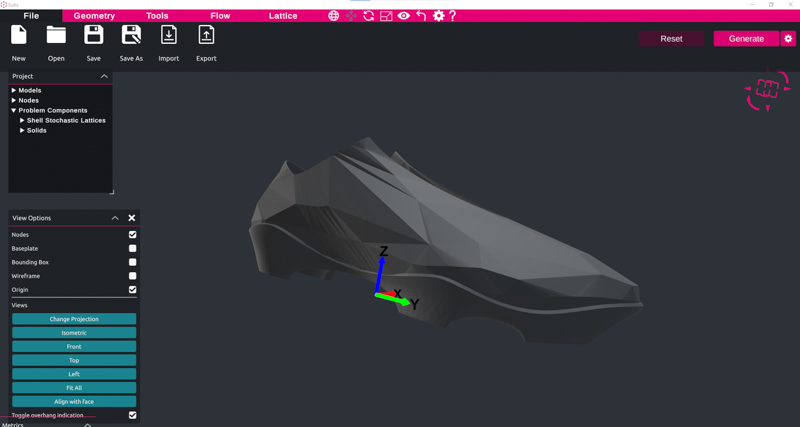
Creating the base of the shoe in Sulis.

Generating lattice structures for the sole.
Sulis’ straightforward, easy-to-use interface allowed us to rapidly generate multiple lattice designs to find the best fit.

At this stage, we explored patterns for the upper part of the shoe within Sulis.
Next, we needed to explore a design for the shoe’s upper part; you can see what we created for an abstract upper cage above. The significance of this specific design is that it provides support for where the laces would be tied alongside additional reinforcements to the foot.
Once we saved everything to Inspire Studio, creating a design for the sock part of the shoe was next. The sock material acts as an extra support system that covers the foot for added stability.
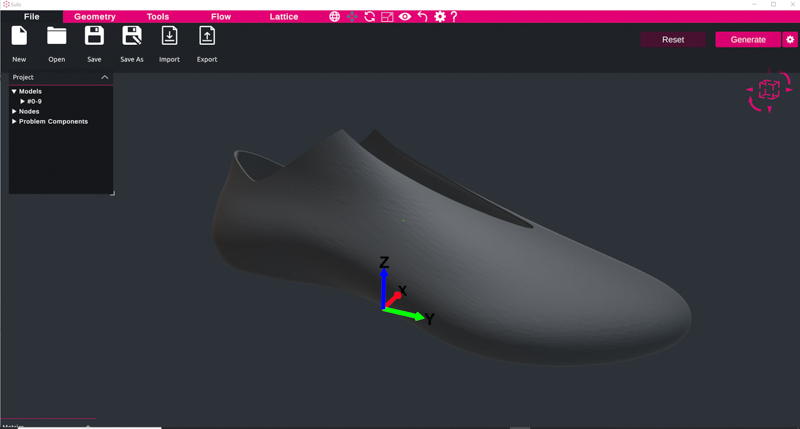
Producing the sock element of the soccer cleat.
Everything came together to produce a sleek, satisfying final design. Staying true to Altair, we used our blue and orange. Sulis is a great tool for inspiring new ideas within designers.
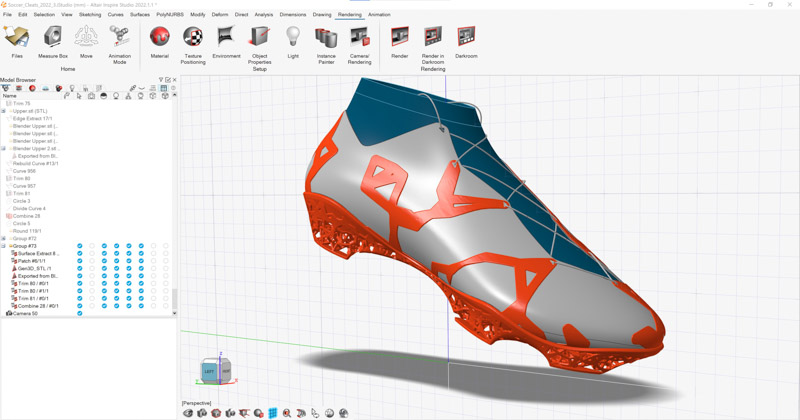
Completed design with Inspire.

Final look #1.
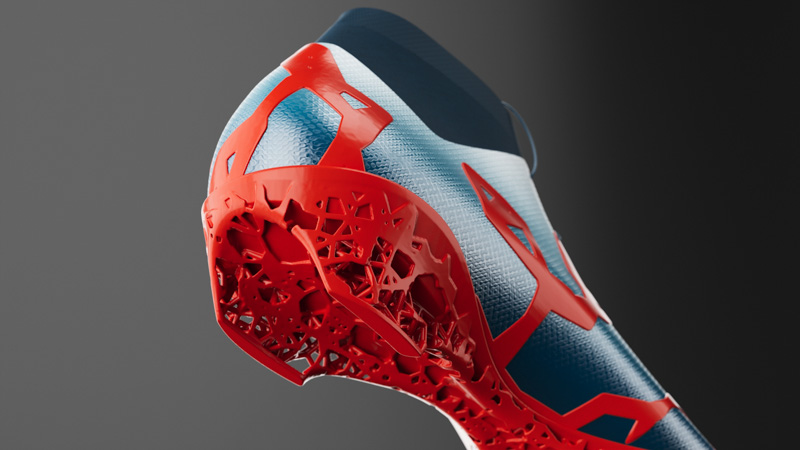
Final look #2.
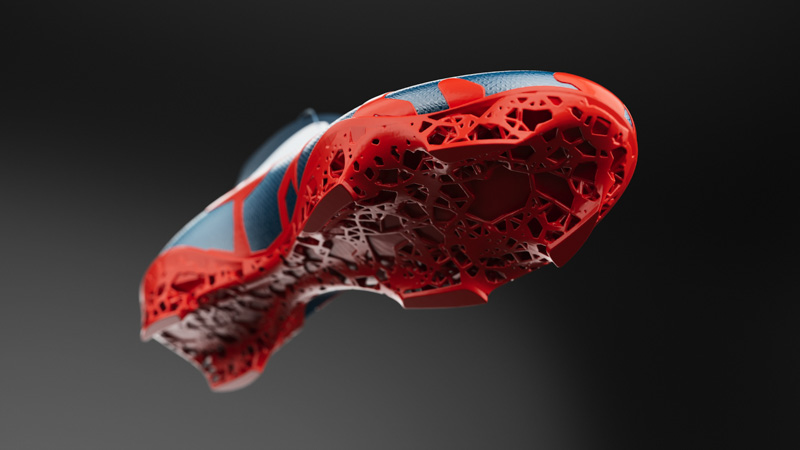
Final look #3.
Pushing the Limits of Soccer Footwear
Athletic equipment manufacturers continue to push the boundary of what people can do with design. Boring footwear is never an issue when it comes to professional soccer, and we were excited to find that these futuristic designs could also be created within our design software, thanks to the latest simulation technology.
While we focused on the aesthetic concept of the shoe for this edition, we could also load our cleat into Altair MotionSolve for load calculation, and then for structural analysis in software such as Altair OptiStruct or Altair Radioss. From there, fatigue calculations could be made in Altair HyperLife to predict the durability and life of the cleats. The entire development process, from design to validation and optimization, can be performed with Altair solutions. So the next time you’re looking to dominate on the pitch, maybe you’ll consider lacing up Altair’s latest cleat.




